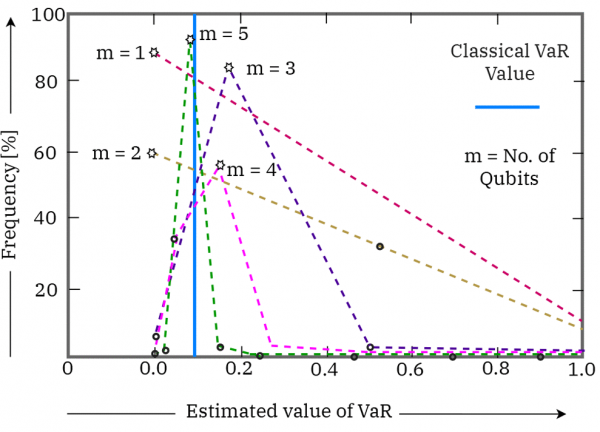Risk management is a very crucial part of the financial system. Value at Risk (VaR) and Conditional VaR (CVaR) are the two units for calculating the risk. VaR is used to determine the loss distribution, while the CVaR is used to determine the expected loss for losses greater than the VaR. CVaR is more sensitive to extreme events in the loss distribution.
Monte Carlo simulations are the most widely used methods to find these predictions on traditional classical computers. Monte Carlo simulation is the process of the generation of random objects or processes that can be achieved on a computer. It follows a stochastic model to sample for future prices. This requires a large number of random samples of future realization of these prices.
If the random data sample is big, and the model designed to predict results is good, it can yield a possibility or probability of identifying the risk factor in our investments. This approach to finding the risk factor faces some obstacles. Sometimes a million samples are needed to draw out relevant results. Also, calculations performed on a classical computer may take overnight or even weeks for big datasets. However, quantum methods can achieve this very quickly. Quantum techniques can not only assist machine learning to solve financial problems, but also can optimize risk returns for the financial assets and portfolios.
Amplitude estimation can be used to estimate and achieve speedups over classical algorithms such as Monte Carlo [ 15 ]. This approach to finding risk estimates has significant advantages over classical computer algorithms. These quantum algorithms can estimate the risk for a given portfolio for a given financial derivative. Only a few thousand samples are required for them to work, whereas Monte Carlo requires millions of samples. It can take weeks for a classical computer to run this algorithm, whereas a quantum computer can run this in a few hours.

As the number of qubits increases (m) the value of VaR calculated by a quantum computer gets closer to the classical VaR value. With the increase of qubits, VaR calculations by the quantum computer show lesser deviation from the classical values. Even though a small number of samples can provide a significant quantum speed-up, more are provided to get a practical quantum advantage.

